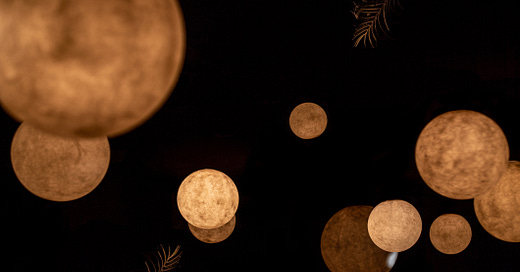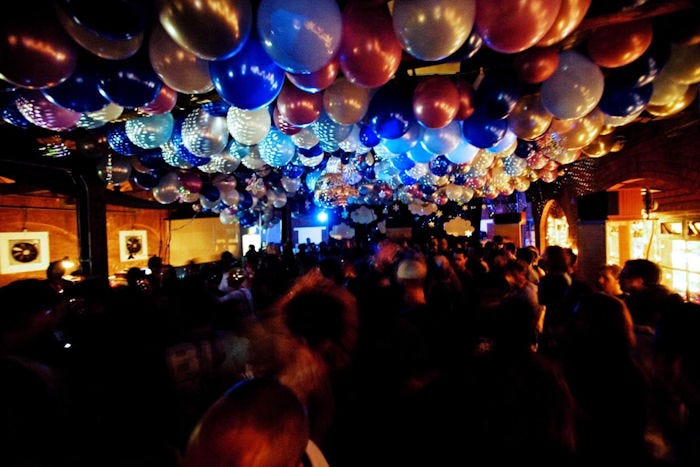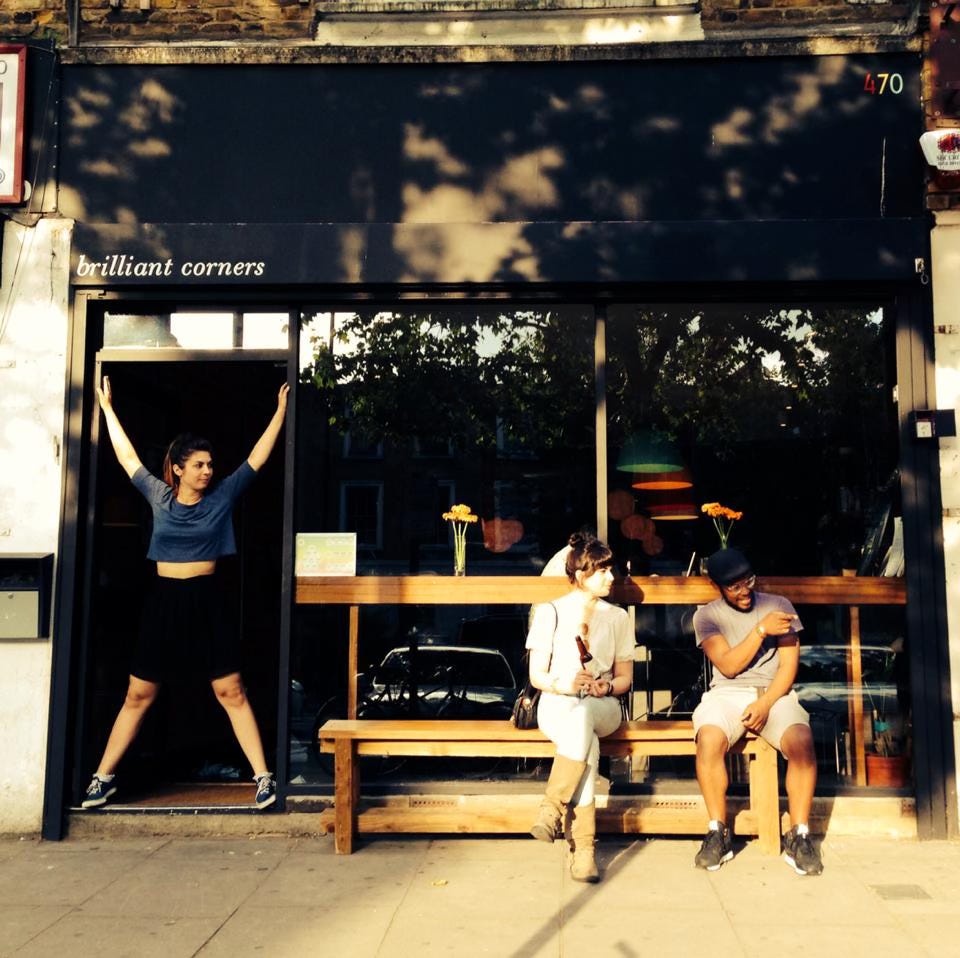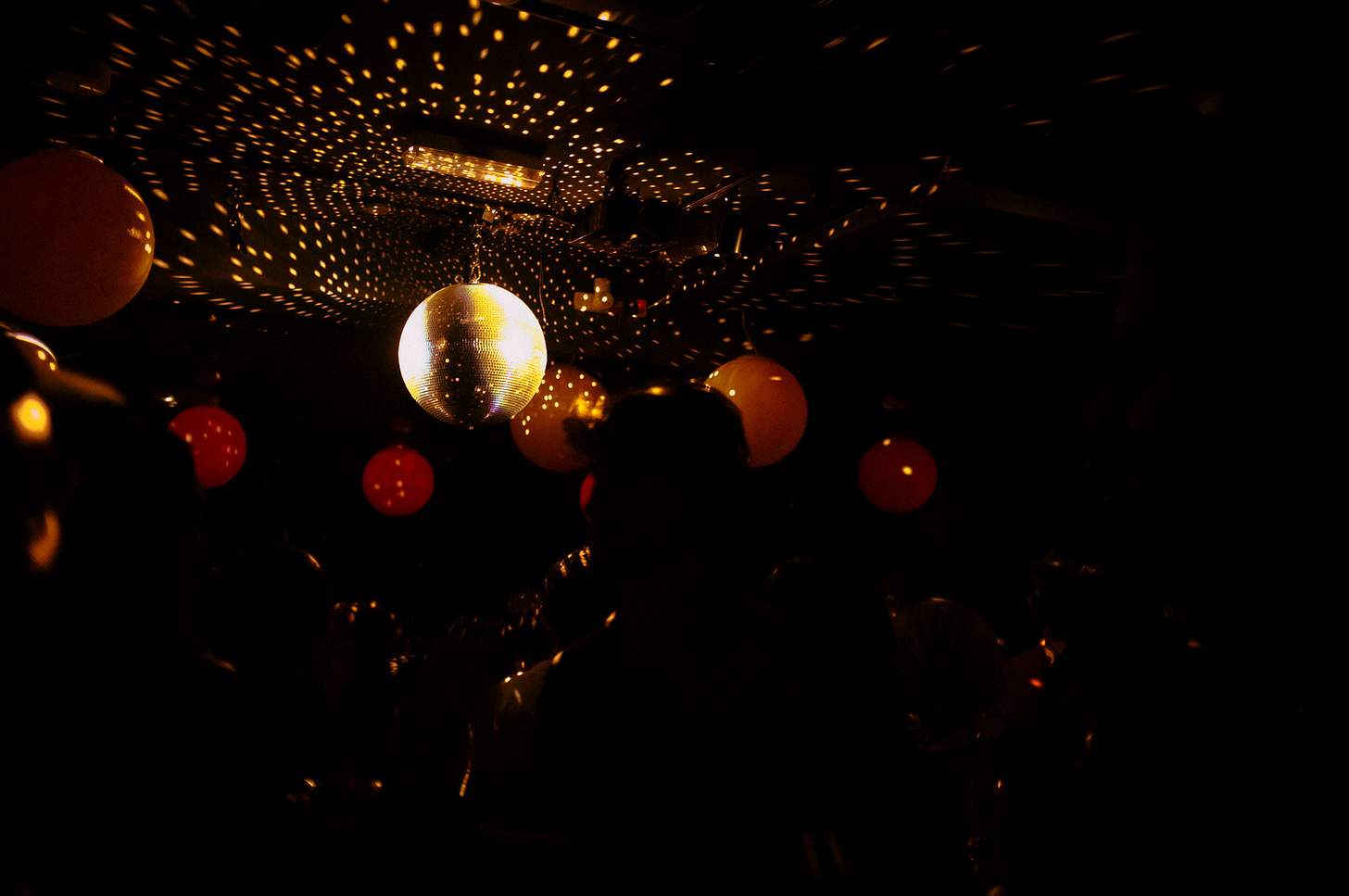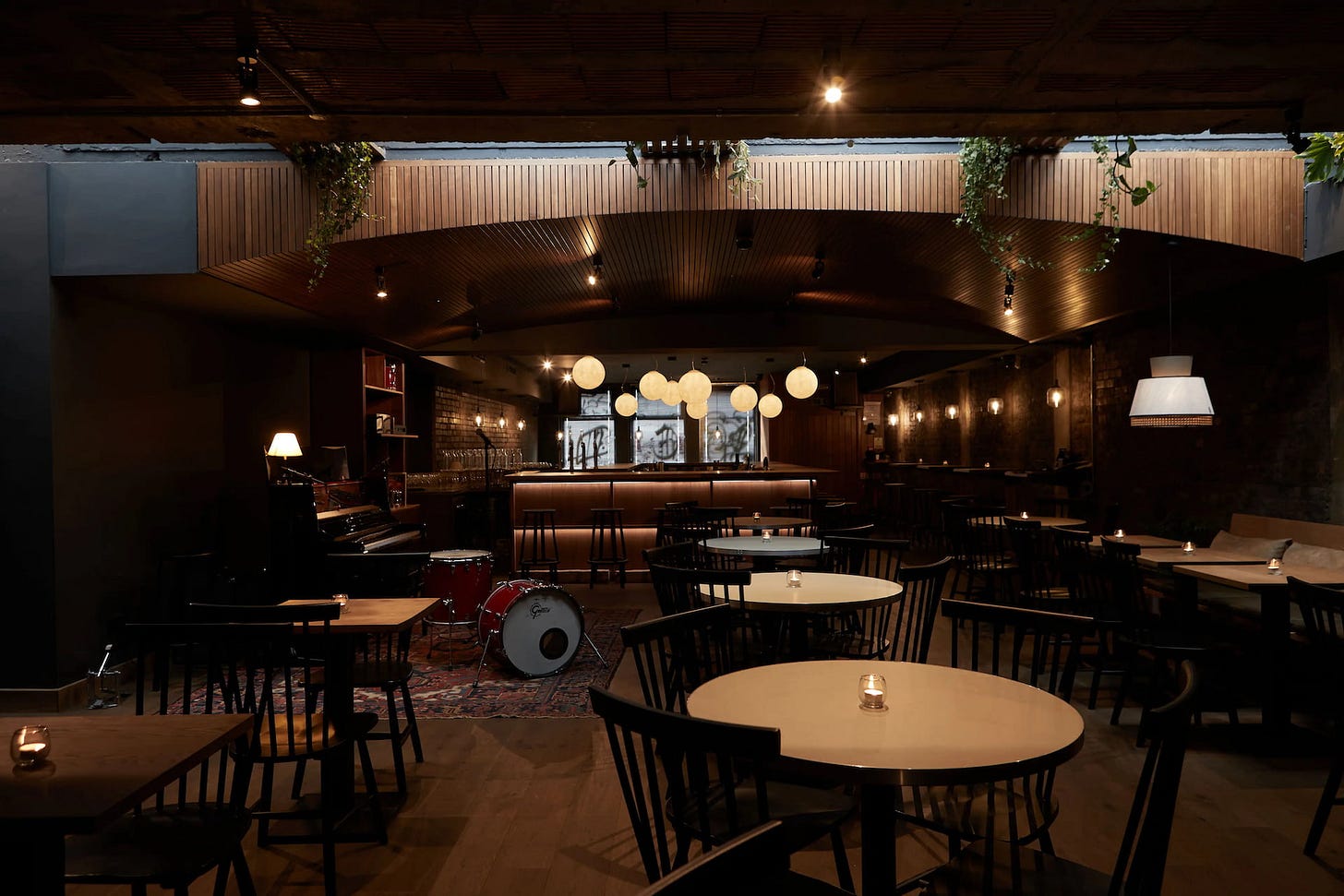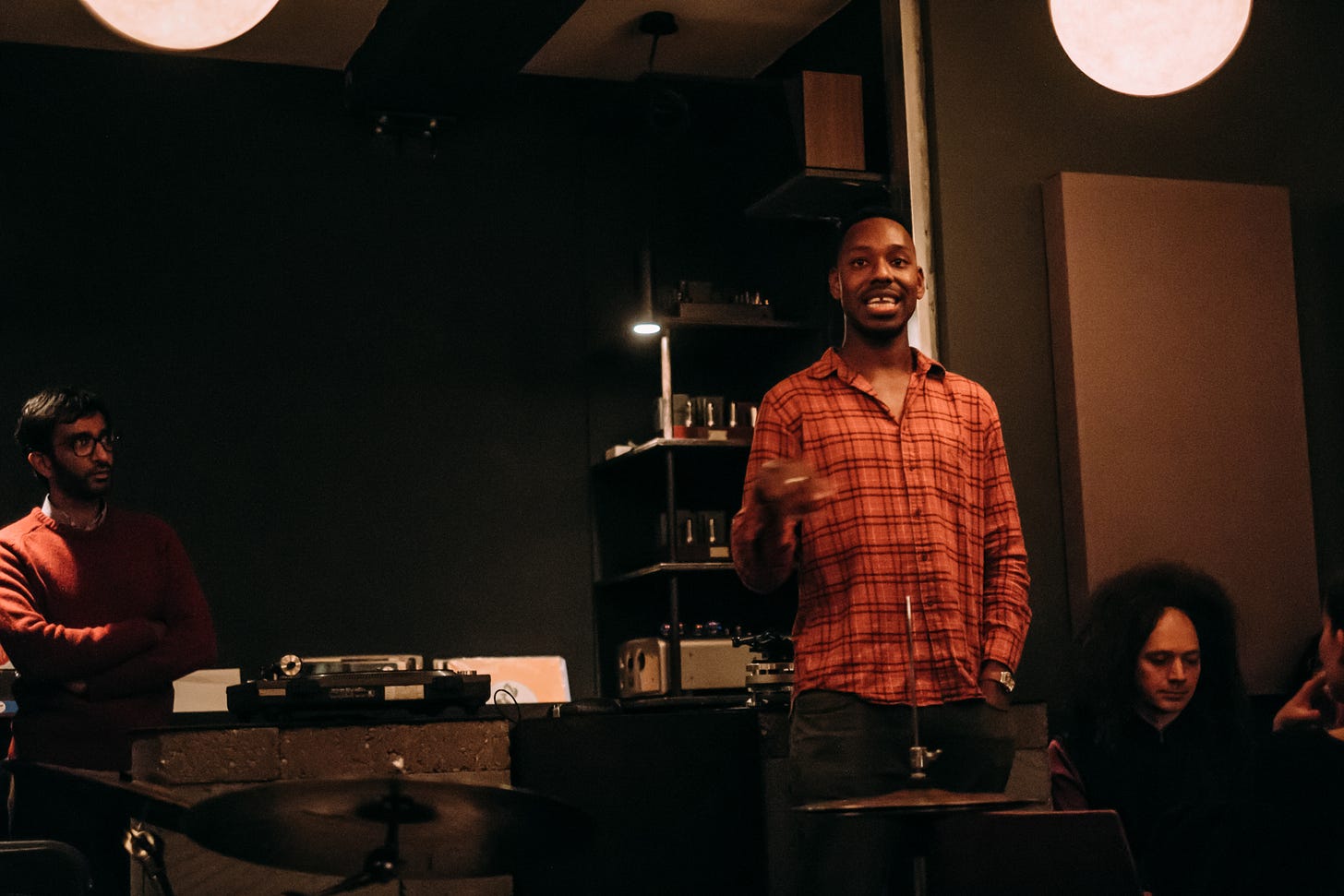Interview with Founders of Brilliant Corners Amit & Aneesh Patel (Part 1)
We sat down with Amit and Aneesh to talk about the inspirations behind their spaces, how they think about sound, and what they’ve learned from years of shaping London’s most immersive musical spaces.
It’s hard to talk about London’s music culture over the past decade without mentioning Amit and Aneesh Patel. But if you ask them, they’d probably rather not talk about it at all. Their venues—Brilliant Corners, Giant Steps, “mu”, Idle Moments, and soon, a new club on Kingsland Road— weren’t created to fit into a movement or trend. They came about organically, shaped by instinct, a love of music, and an obsession with getting things just right.
When they opened Brilliant Corners in 2013, it wasn’t with the intention of being labelled a “listening bar.” It was simply a place where food, wine, sound, and atmosphere could exist in harmony. But what they created sparked something much bigger, influencing a wave of venues across the world that now look to the Patel brothers as pioneers—whether they embrace that title or not.
That quiet but deliberate approach carried into their next ventures. Giant Steps took things outdoors, turning a Hackney Wick warehouse and courtyard into an evolving space for deep listening, dancing, and community. Mu brought live music into the equation, adding another layer to their already deep relationship with sound. Idle Moments focuses on wine and records, a quieter but equally curated extension of their world. And soon, their new late-night club on Kingsland Road will push their ideas even further.
Euan: Let’s start with some context and inspiration behind opening Brilliant Corners. What was happening in London at the time, and what drew you to starting a place like BC?
Aneesh: We often talk about discovering Beauty and the Beat, which then led us to Lucky Cloud. At both those parties we observed first hand the amount of physical effort they required, loading and unloading vans well into the early morning. Eventually we wondered, “Why isn’t there a permanent place for these types of sound systems where no one has to pack up at the end of the night? That was part of the motivation.
Amit: We first heard great sound at David Mancuso's London incarnation of The Loft and at Beauty and the Beat. Both parties also had an incredible and deep understanding of music programming. Hearing the right piece of music at the right time on the right system was an inspiration. Another motivation behind Brilliant Corners was that BATB only happened once a month. We met some amazing characters there and wanted to see them more often.
Some of their wider crew were sometimes playing in the bar at Vortex, and I thought, That’s great—even when there’s no big party, we can still go somewhere and hear good music. Maybe some of the same people will be there. But Vortex wasn’t ideal—it was a cramped bar with a system that wasn’t really set up for a party. Still, it was better than nothing.
At that time, there wasn’t really a dedicated space where you could go and just listen to good music. House music and clubbing were popular, but it wasn’t common to go out and listen to the varied range of music we experienced at Beauty and the Beat.
Those guys have an amazing intuition for playing surprising but perfectly timed music during what many consider the peak time of a party. The way they selected and played music felt every exciting to us. Under their selections, the dancefloor was locked into the art of the music, rather than just the speed of the beat. Ultimately, we wanted there to be a permanent venue for approaching music in this way. We had a strong feeling that this kind of space should exist. It was this sense of obligation that was one of our main motivations for opening Brilliant Corners.
Euan: So your motivation was to create a permanent home for the music and sound that inspired you. What key considerations did you have when transitioning from temporary, monthly events to a full-time space? How did you ensure its longevity and sustainability as a hub for music?
Amit: We were confident that the music itself had intrinsic appeal, and it was just a matter of time before more people would connect with it.
Aneesh: Of course, the sound system had to meet a certain standard, but beyond that, we were also mindful of the aesthetics. We didn’t want it to look too fancy or too much like a club—no strobe lights, nothing too polished. In the beginning, we even decided not to put up a sign.
We’ve always tried to avoid making it seem like an exclusive, high-end venue that could intimidate people. Some places that focus on the grandeur of sound systems can feel a bit ostentatious, turning into a kind of "hi-fi porn" where people geek out over expensive equipment. But what we learned from Beauty and the Beat and Mancuso’s Loft was that while sound quality is important, you are missing the point if you think it’s about showing off the gear. The key element is the party, and the togetherness. The system should speak for itself, creating an environment where people can enjoy the music without feeling like they need to be a certain type of person to appreciate it.
Euan: That definitely comes through, even with Mu. In terms of the different spaces you run, how do they connect? If each serves a different function musically, what ties them together?
Amit: Maybe it’s the approach to curation and the way we programme the music. Over the past 10 years, as things have evolved, we’ve felt a growing responsibility to make our spaces welcoming to everyone—whether or not they know about the history of Brilliant Corners or the DJs and musicians we have worked with over the years. We try to ensure our venues are not just places for great music, food, and drinks, but spaces that as wide a demographic as possible feel welcome and can rely on for consistency.
Euan: Starting in 2013, there was a particular community around your spaces. Looking at some of the artists you featured, like Shabaka or Floating Points, they were at an early stage in their careers. Now, especially those two, have gone on to the next level.
How has the community of artists you feature changed since then? Would you say there's been a shift in style or in the backgrounds of the artists who now perform more regularly in your spaces?
Aneesh: Our approach to programming hasn’t changed. Shabaka Hutchings, Seb Rochford, Byron Wallen, and Neil Charles played the first ever Played Twice in 2014, all these guys still play as often as possible often at “mu”.
Sam [Floating Points] played at Brilliant Corners and Giant Steps last year. And many of the DJs who’ve been with us since the beginning still play today.
I don’t think the overall sound at Brilliant Corners has changed much. If anything, we’ve tried to keep it consistent.
Amit: The background to Brilliant Corners is that back in 2013 jazz wasn’t as widely appreciated — it was almost a dirty word to some people. We were discovering it for the first time, quite naively, thinking, "Wow, I can’t believe I’ve never heard Mingus on a good sound system before!" And then, of course, that discovery kept expanding and wherever possible we were often putting jazz into environments that were usually club-oriented.
When we first did Played Twice, we had a great sound system and wanted people to sit down and listen to a jazz record from start to finish, followed by a live performance. The musicians we approached to perform were genuinely surprised that non-jazz audiences were so deeply into the music. They were excited to see people engaging with jazz in that way and we were proud to present them with an audience that gave their performances the attention that their musicianship deserved.
The eco-system of musicians we work with are well-known within their musician circles, but Played Twice introduced them to a new audience—one that was just as engaged as the more traditional jazz crowds. It was the start of something bigger, a growing appreciation that continues today. Now, saying "I like jazz music" isn’t unusual at all. It’s seen as part of healthy musical appetite.
Next we dive deeper into the journey that has shaped Brilliant Corners and its sister venues - as well as a detailed look into the iconic sound system.
💡 Paid subscribers perk:
May’s discount code for Bandcamp is just below. 👇
Keep reading with a 7-day free trial
Subscribe to Time Capsule to keep reading this post and get 7 days of free access to the full post archives.

